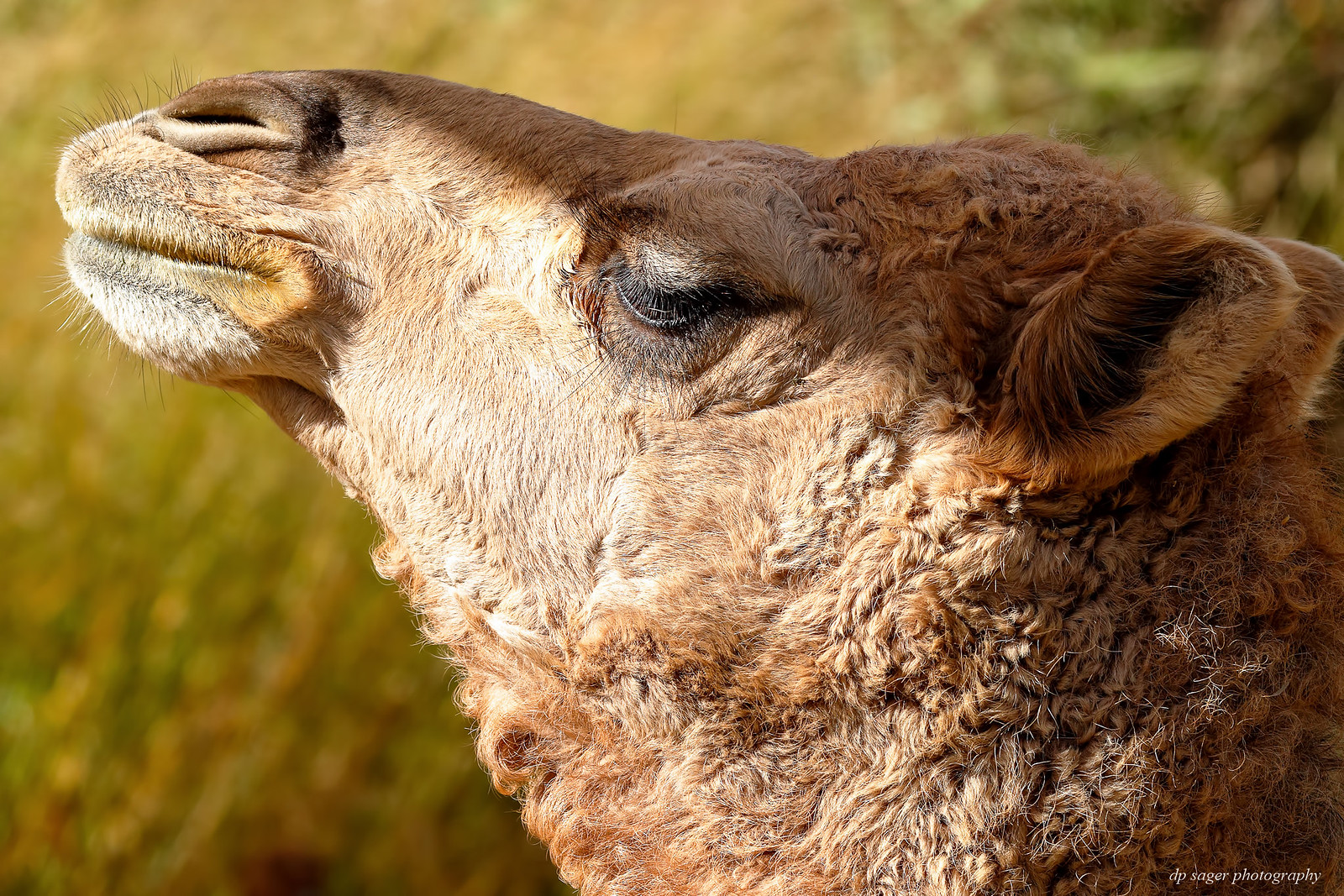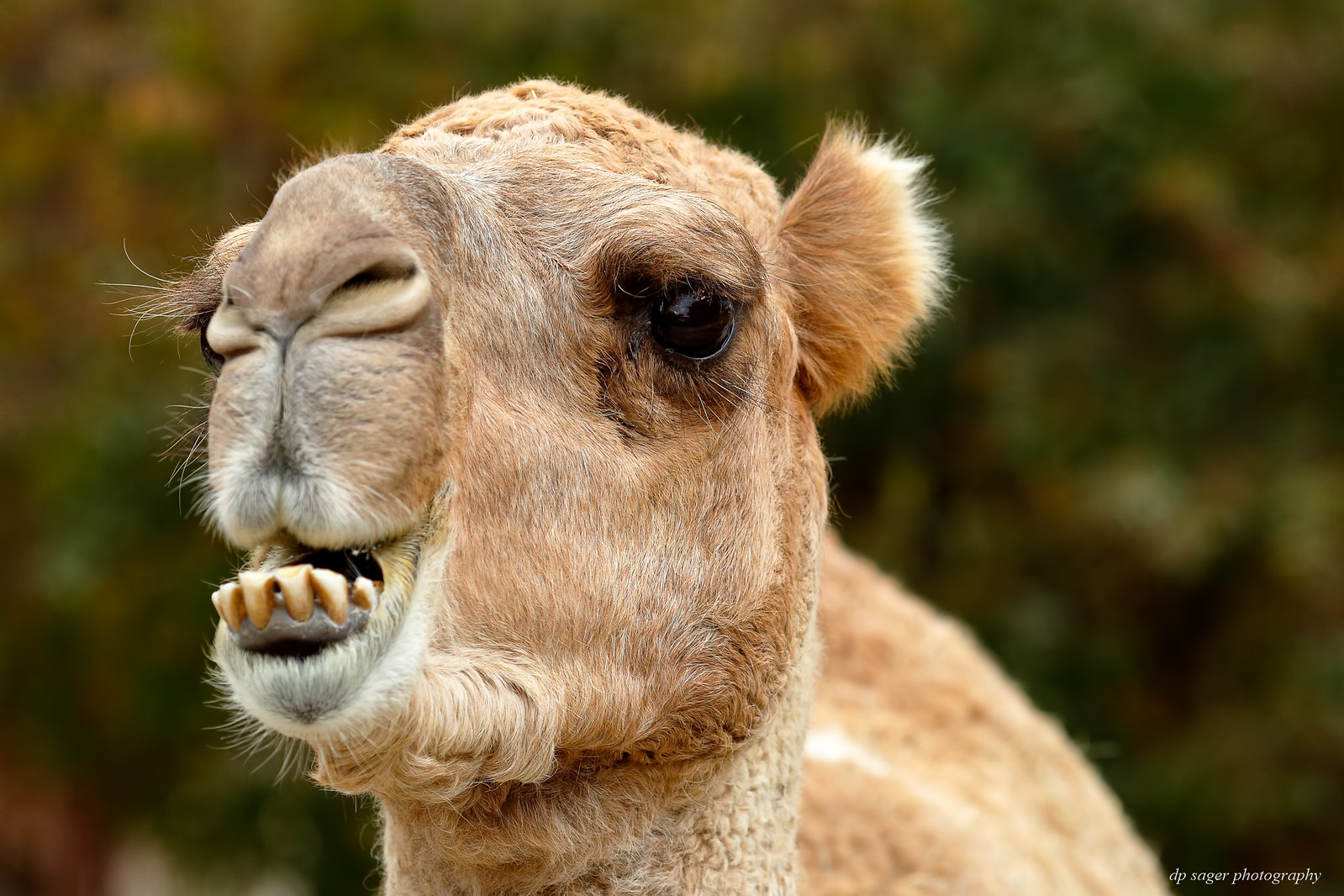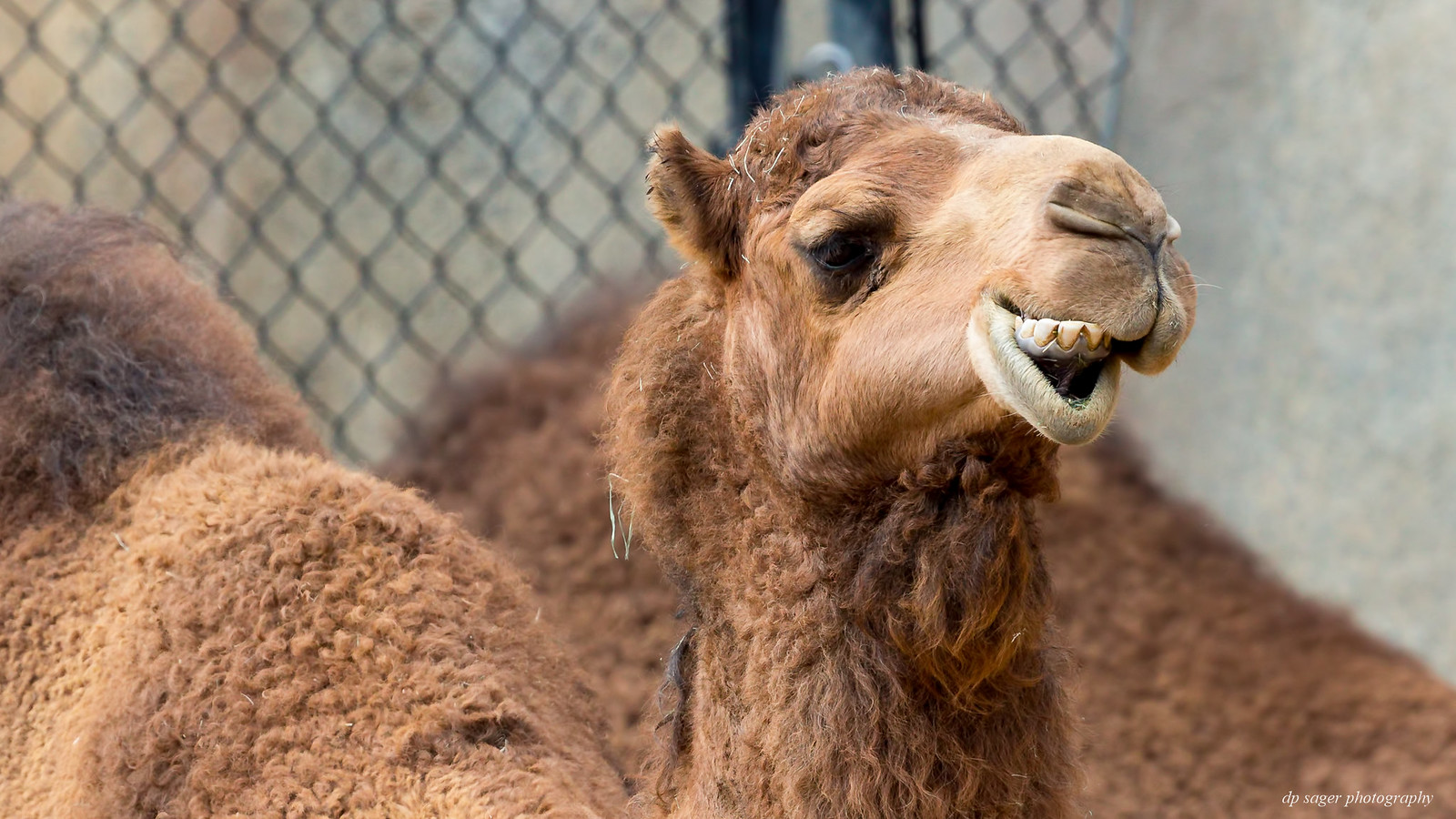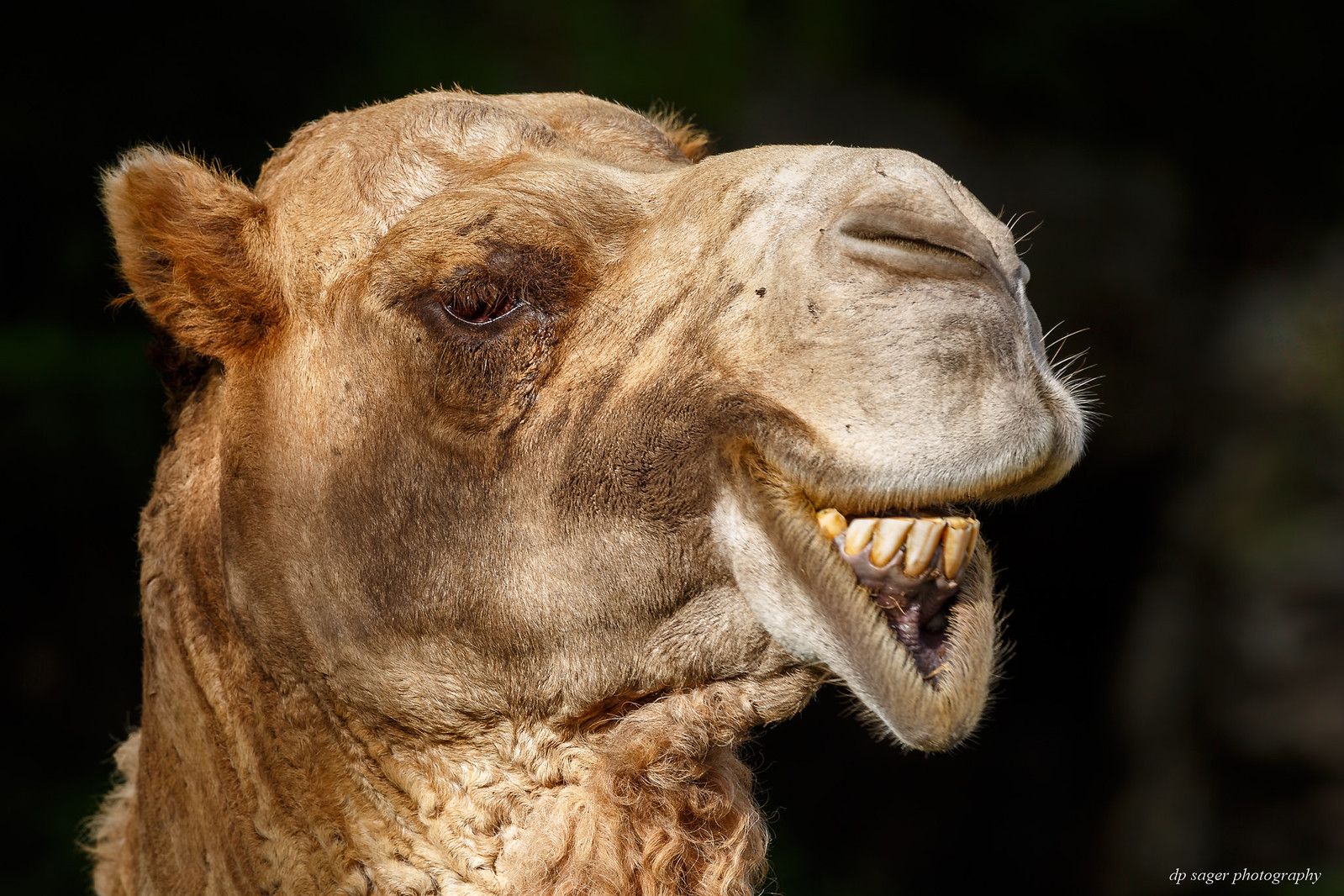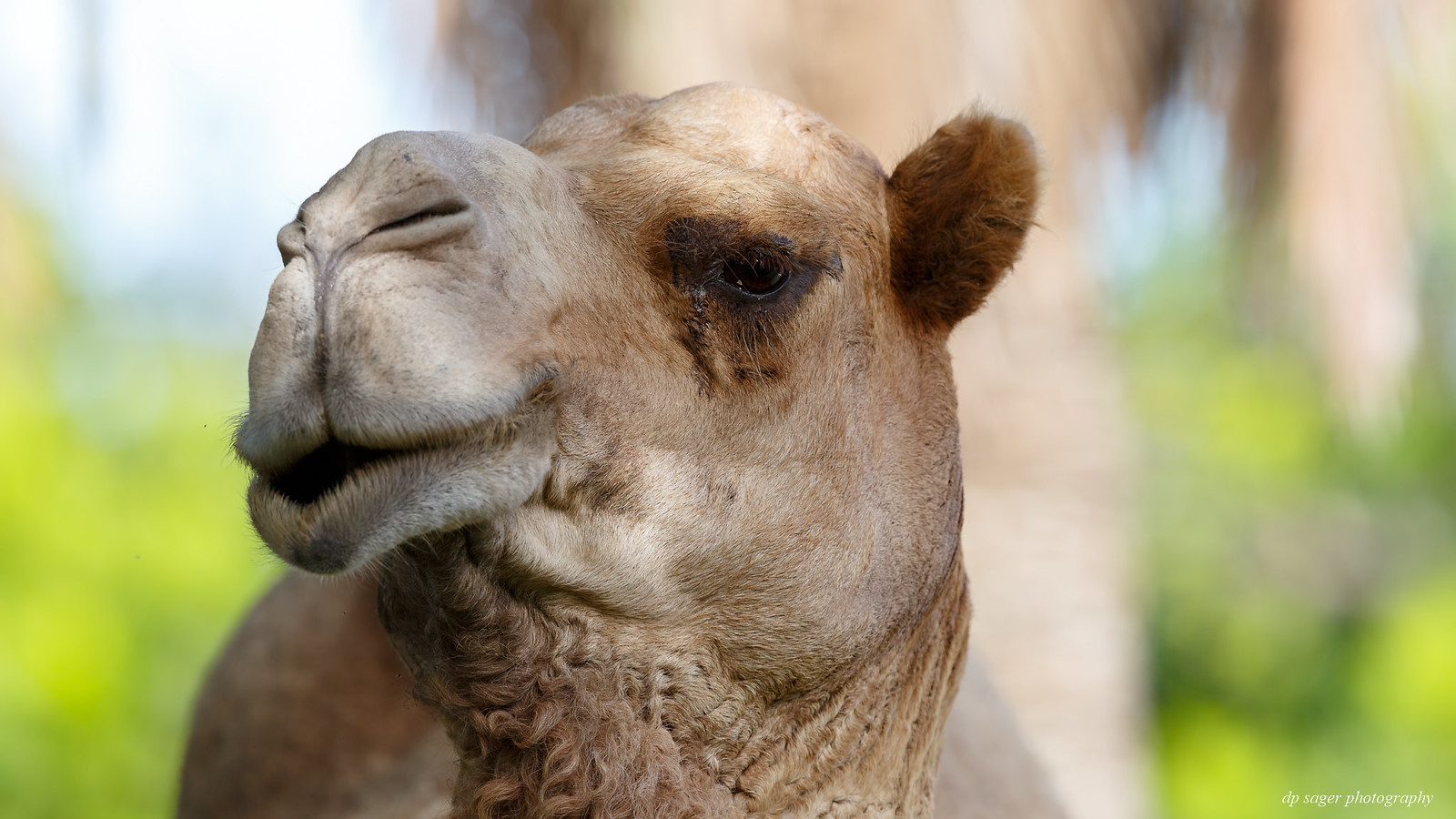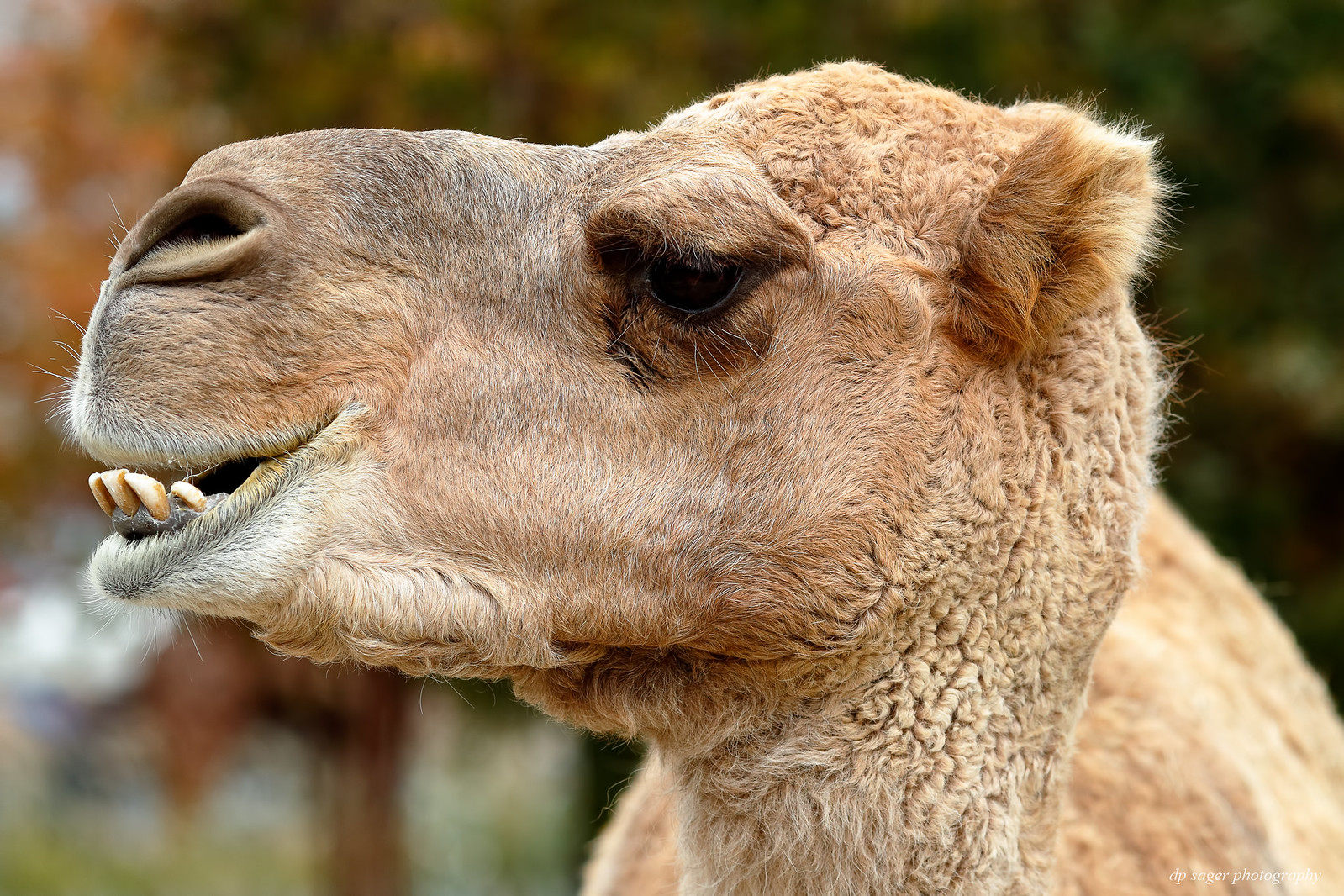A study of the dromedary
Apr 16, 2019 15:00:52 #
Thank you Jan, Earnest, twowindsbear, Vicki! I've found the chewing to be amazing where it looks like they can move their jaws so far left n right, they can hit the molars on the opposite side.
Apr 16, 2019 15:18:49 #
Apr 16, 2019 15:24:00 #
Apr 16, 2019 18:48:39 #
Apr 16, 2019 18:55:14 #
There is a camel dairy in California that had demonstrations of milking at the LA County Fair one year. They did not want to go through all the regulation of selling the milk for human consumption, so they make soap out of the milk. However, they do drink it themselves. Apparently camel milk is much more easily digested than cows milk and is lower in fat.
Apr 16, 2019 21:53:26 #
Apr 17, 2019 00:54:34 #
Very nice shots...very clear. The 3rd one looks like my former mother in law. : 







Apr 17, 2019 02:09:43 #
As always, great photos and educational commentary.
Apr 17, 2019 07:46:33 #
CHG_CANON wrote:
The dromedary, also called the Arabian camel ( i C... (show quote)
outstanding shots of the interesting dromedary...enjoyed the narative very much.
Apr 17, 2019 10:40:18 #
Thank you mdpathjp, Karin, Don, woodweasel, Murray, Jeff, merrytexan! Glad you enjoyed!
Apr 17, 2019 10:41:52 #
hassighedgehog wrote:
There is a camel dairy in California that had demonstrations of milking at the LA County Fair one year. They did not want to go through all the regulation of selling the milk for human consumption, so they make soap out of the milk. However, they do drink it themselves. Apparently camel milk is much more easily digested than cows milk and is lower in fat.
Thank you hassighedgehog! I read about some of the many uses of camels and camel products, although I'm not sure there's a market for camel milk, even with health benefits.

Apr 18, 2019 01:52:38 #
Ed Greding
Loc: Texas
Thanks for all that interesting information. I hope it will be followed by a similar post on the Bactrian Camel! Their evolutionary history is of great interest. As you state, they originated in North America. Subsequently some populations extended their ranges across the Bearing Land Bridge and into Asia,
Apr 22, 2019 00:42:46 #
Apr 22, 2019 01:36:24 #
Ed Greding
Loc: Texas
Hey Paul, I forgot to mention that while some populations crossed the Bering Land Bridge into Asia, then formed modern species through geographic isolation and genetic divergence, others spread through Mexico, Central and South America, evolving in their isolation into Guanacos, Vcunas (tilde over the n), Alpacas, and Llmas. I imagine you know far more about this than I, and I surely look forward to your future photos and essays on this fascinating group of animals. Their physiology is an amazing subject in itself. --Ed Greding
Apr 22, 2019 09:06:32 #
Thank you Linda, Ed! I don't know that I have enough images yet for a survey of the Bactrian. I did note these are the type at both zoos in Chicago so maybe I'll visit their areas this year.
If you want to reply, then register here. Registration is free and your account is created instantly, so you can post right away.









